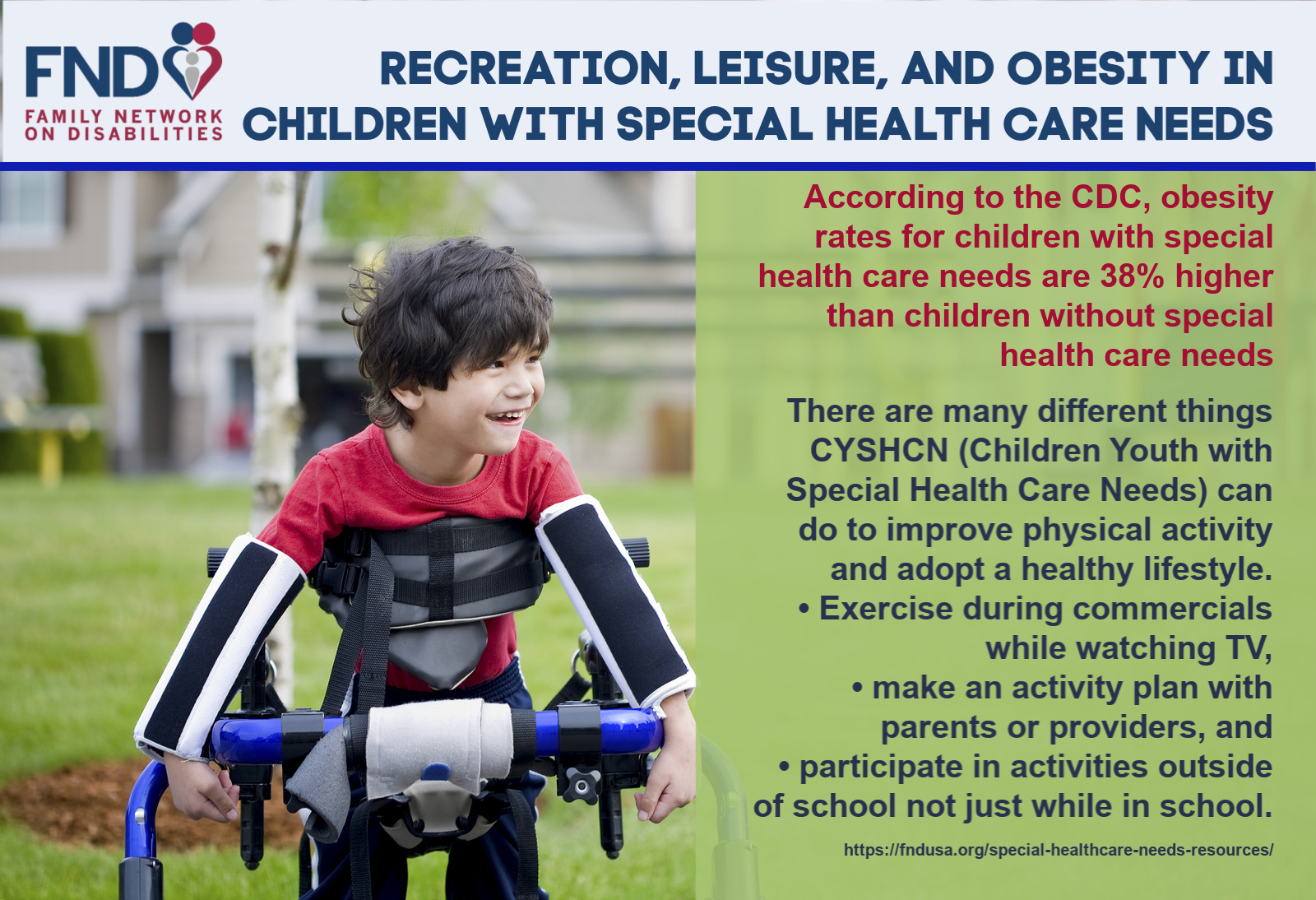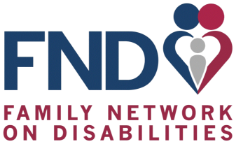INformation Hub
Recreation, Leisure, and Obesity in Children with Special Health Care Needs
Recreation, Leisure, and Obesity in Children with Special Health Care Needs
According to the CDC, obesity rates for children with special health care needs are 38% higher than children without special health care needs. Some of the challenging factors youth face with special health care needs are as follows:
lack of healthy food choices,
difficulty chewing or swallowing food,
medications that contribute to weight gain or weight loss,
pain,
lack of energy,
lack of accessible environments, and
lack of resources.
Evidence shows that regular physical activity provides important health benefits for people with disabilities. Benefits include:
improved cardiovascular and muscle fitness,
mental health,
balance, and
a better ability to do tasks of daily life.
Aerobic activities, muscle strengthening activities and bone strengthening activities are vital to the health and well-being of children and youth with disabilities. All youth needs 60 minutes of activity per day.
There are many different things CYSHCN (Children Youth with Special Health Care Needs) can do to improve physical activity and adopt a healthy lifestyle.
Exercise during commercials while watching TV,
make an activity plan with parents or providers, and
participate in activities outside of school not just while in school.
There are many websites that give ideas on how to become physically active.
Sports Ability (https://www.fdoa.org/sportsability) is a website, which gives ideas on how to adopt a physically active lifestyle for you and your family.
Kids As Self Advocates (KASA,http://fvkasa.org/resources/sports.php) gives examples of places to choose to participate in activities for you and your family as well as summer camps which are accessible for people with disabilities.
https://www.nchpad.org/fppics/NCHPAD_Discover%20Inclusive%20School%20Wellness(1).pdf
SOURCE ARTICLE: FNDUSA.org
Menu
Give us a call at (727) 523-1130 or (800) 825-5736 or request a callback by clicking below.
311 South Missouri Ave, Clearwater, FL 33756
(727) 523-1130
(800) 825-5736


